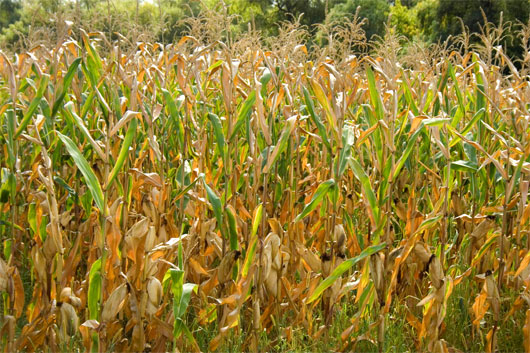Green fuel from corn waste
After harvesting, the corn plants are released into the environment with many fibers which seem useless such as stems, leaves, shells, corns .
During their lifecycle, this waste produces much more carbon dioxide than the US permissible threshold. The problem is how to produce biofuels from corn waste products and reduce greenhouse gas emissions.

Photos: Wikipedia
The solution is to use waste products to produce ethanol and many other biofuels, thus reducing the amount of carbon in the arable land (the agent that creates greenhouse gases is much more than gasoline). This study is published in Nature Climate Change.
Group of scientists under the leadership of Professor Adam Liska, using supercomputing model at UNL Informatics Center, Netherlands to assess the harmful effects from corn waste on an area of 52 ha. If this kind of waste is decomposed naturally, the 5-year average is 100 gr CO / megajoule, 7% higher than the emission of gasoline.
Waste from corn is considered a major resource for cellulosic ethanol production. The US Department of Energy has provided more than $ 1 billion to support research into developing green energy from cellulose, including the utilization of waste from corn.
- Turn corn cobs into fuel
- Using corn residues ... corn fuel!
- Turn human waste into rocket fuel
- Producing coal from waste
- Experience in growing sweet corn
- Turn garbage into jet fuel
- Technology turns human waste into cheap coal
- the fight against poison in corn
- The era of home fuel production
- Admire the exotic polychrome corn in America
- The way to make corn is like a rainbow
- Buses run by human waste
 Is the magnetic North Pole shift dangerous to humanity?
Is the magnetic North Pole shift dangerous to humanity? Washington legalizes the recycling of human bodies into fertilizer
Washington legalizes the recycling of human bodies into fertilizer Lightning stone - the mysterious guest
Lightning stone - the mysterious guest Stunned by the mysterious sunset, strange appearance
Stunned by the mysterious sunset, strange appearance Warning of an explosion of electronic waste created by AI
Warning of an explosion of electronic waste created by AI  More than 6 million tons of plastic waste are floating in rivers, lakes and oceans.
More than 6 million tons of plastic waste are floating in rivers, lakes and oceans.  World's largest waste-to-hydrogen plant
World's largest waste-to-hydrogen plant  Concrete made from fly ash waste and glass can transmit light
Concrete made from fly ash waste and glass can transmit light  The world's largest waste-to-electricity plant
The world's largest waste-to-electricity plant  The grave of nuclear waste under the sea costs 83 billion USD
The grave of nuclear waste under the sea costs 83 billion USD 